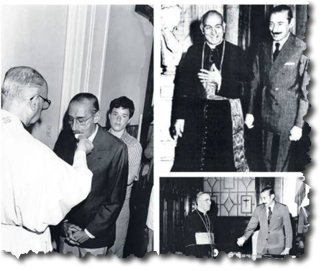Did Pope Francis play a major role in Argentina’s Dirty War? Reporters claim they can substantiate this allegation. They published photos of dictator Jorge Videla with a cardinal, allegedly Jorge Bergoglio, the recently elected Pope Francis. But something was wrong with these findings.
Great find, Brad: pope’s connivance with dictatorship RT
<a href="https://twitter.com/delong">delong</a> Hugh O'Shaughnessy: Sins of the Argentine church <a href="http://t.co/mogltc1MLM" title="http://bit.ly/XuR7k0">bit.ly/XuR7k0</a></p>— Matt Seaton (mattseaton) March 13, 2013
The buzz started just two hours after the waiting for white smoke was over. Hundreds of people, including reporters, tweeted a link to a 2011 story in The Guardian: “ ADVERTISEMENT


















